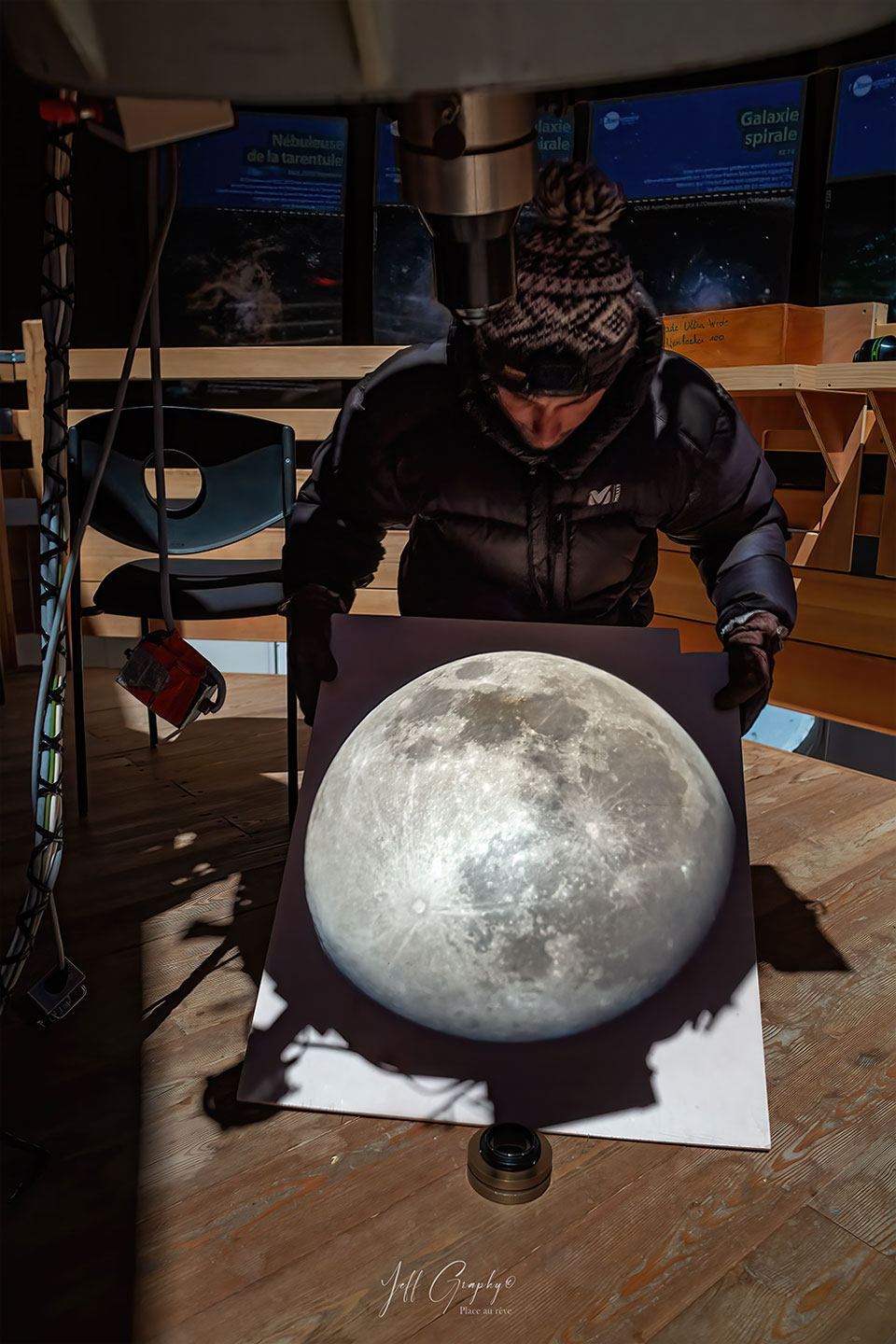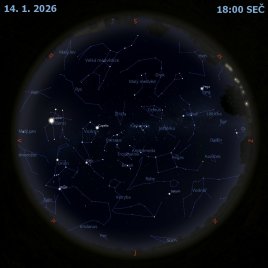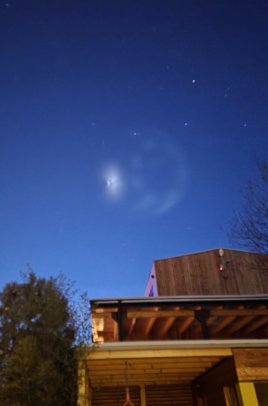Přímá projekce: Měsíc v mých rukou

Uznání a copyright: Jeff Graphy
Nemusíte se dívat dalekohledem, abyste věděli, kam míří. Promítání obrazu dalekohledem na velký povrch může být užitečné, protože se zmírní velmi intenzivní jasnost velice jasných zdrojů. Takové snížení jasu je užitečné při při pozorování Slunce, například při zatmění Slunce. Na tomto snímku jedinou expozicí je ovšem příliš jasný promítnutý úplněk Před dvěma týdny nastal letošní únorový úplněk, kterému se v některých severských kulturách říká sněžný úplněk. Přístrojem k promítání je hlavní 62centimetrový dalekohled observatoře Saint-Véran vysoko ve francouzských Alpách. Přímé pozorování úplňku je snadnější, protože není zase tak jasný, i když neuvidíte takovou úroveň podrobností. Příští možnost nastane 17. března.
Seznam odkazů v popisu
- NASA: How Do Telescopes Work?
- Wikipedia: List_of_brightest_natural_objects_in_the_sky
- NASA: All About the Sun
- APOD: 2008-08-02 Tričko se zatměním
- NASA: Episode 19 – We Asked a NASA Scientist – Why Can You See the Moon During the Day?
- APOD: 2016-02-01 Najděte člověka na Měsíci
- TimeAndDate.com: Traditional Full Moon Names
- Wikipedia: Observatory_of_Saint-Veran
- Youtu.be: Saint-Véran
- Wikipedia: Alps
- Shopify.com: Foto: Kočka v brýlích :-)
- NASA: Moon Phase and Libration, 2022
NASA Official: Phillip Newman Specific rights apply. NASA Web Privacy Policy and Important Notices
A service of: ASD at NASA / GSFC & Michigan Tech. U.
Odkaz na originální APOD


